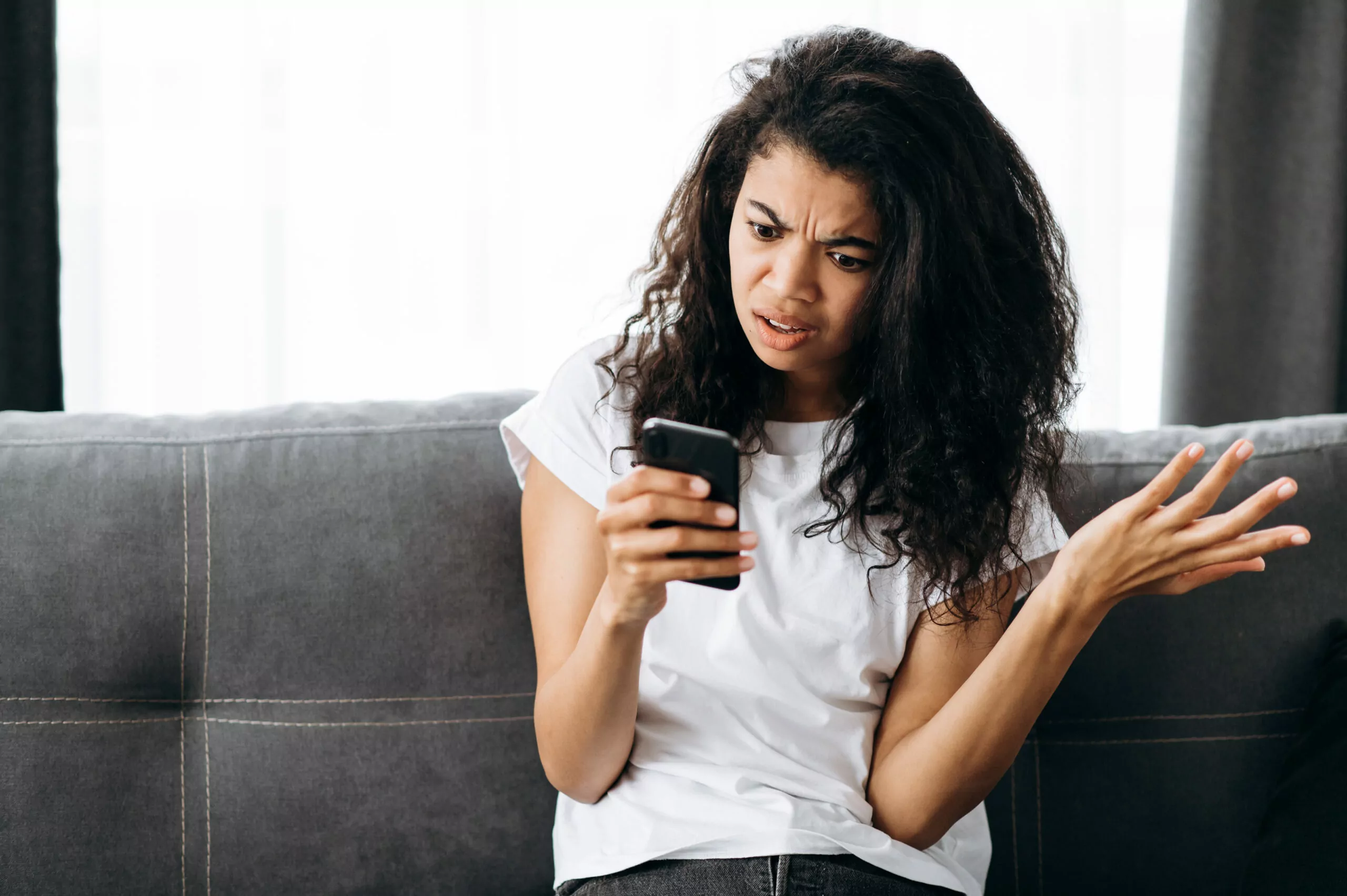Here’s why you’re getting a Tinder authentication code text but you’re not on Tinder:
This means that your phone number is on file with Tinder and formally associated with the account tied to the text message.
If you don’t have a Tinder account, it means that someone else is using your phone number.
This could be a harmless mistake, or it could be a step in an elaborate scam.
So if you want to learn all about why Tinder nonusers get Tinder authentication code texts, then this article is for you.
Keep reading!
- Tinder Reporting: One Knows You Reported Them?
- Tinder: Likes & Matches at First, Then Stops?
- Tinder Scammers: Use of Your Phone Number?
- Showing Up On Tinder After Deleting: Do You?

What Tinder Authentication Code Text Message Are You Seeing?

Tinder sends out temporary authentication codes that look a lot like similar codes and messages from other platforms.
Tinder can send this code via email or text message.
Today, we’re going to focus on the text message.
Tinder can and will change the message over time and according to the region where you live, but the gist of it will remain the same.
The message will tell you that the code is for authorization for a Tinder account.
It will usually have the Tinder account name in the message.
The most important part of the message is the code that is in the text.
That code can be used for access to a Tinder account.
What Is the Authentication Code in the Tinder Text Message?

More specifically, the code that is in the text message is there as a part of two-factor authentication.
This is something used by Tinder and many other tech companies to improve account security.
It might make sense if I first explain single-factor authentication.
For any online account that you have, there is probably a username and a password.
Often enough, the username is your email address.
Regardless, it’s something that other users on the platform can probably see.
To log in, you also need a password.
That password is an authentication code.
It’s the signal authentication factor.
When things work properly, you’re the only one who knows the password because you set up the account.
As you likely know by now, passwords are not foolproof.
They can be cracked, stolen, or otherwise compromised, and that’s the problem.
Single-factor authentication is rendered useless if your password is compromised.
That brings us back to two-factor authentication.
It still uses your username and password for the first factor, but a second factor is needed before you will get into the account.
The second factor typically involves an email address or phone number.
You can set up either.
What happens is you try to log in normally with your username and password.
If you get the password correct (which you should since this is your account), then it triggers the second factor.
For that, you will receive either an email or a text with a temporary authentication code in it.
You can then type that code into the website or app you are trying to sign into, and you’ll get in.
The second factor requires that you have access to either the email address or phone number on file with the platform.
So, you need to know the password to your account and have access to the authentication message.
That’s the second factor.
Going back to the original question, we’re discussing a second factor that involves a text message and Tinder.
What is the message?
It’s a message that is prompted when you try to sign into a Tinder account that has this security feature enabled.
The message contains the temporary password that you need for your second factor of authentication.
With that code, you can finish signing in to use Tinder.
That’s really all that is involved with the text.
Why Do You See the Tinder Authentication Code Text Message?

If you’re seeing an authentication code text message, then it means one of two things.
First, and most likely, it means that your phone number is associated with a real Tinder account.
Whether or not it’s your account, your phone number is on file with Tinder for the sake of two-factor authentication.
Second, it could just be a clerical error on the part of Tinder.
Phone number information is automated at Tinder, but it’s still possible for a mistake or a bug to arise.
In either case, your phone number has become associated with a Tinder profile, even if that profile isn’t yours.
Those are the reasons why you see the message.
What if You Don’t Have a Tinder Account?

This is where things get interesting.
If you have a Tinder account and get an authentication text, then you were probably trying to sign into Tinder.
If you get this message when you don’t even have a Tinder account, then that’s a little weird.
There are still a few viable explanations for this, and I’ll take you through each of them.
First, we have to consider the very most likely possibility.
You actually do have a Tinder code and forgot about it.
Why are you seeing the message?
Either you tried to sign back in yourself, or someone is trying to break into your Tinder account.
Why Are You Seeing the Authentication Code Even if You Don’t Have a Tinder Account? (4 Reasons)

If that’s not the case and you never had a Tinder account, then there are a few other explanations that might make sense.
At the bottom of it all is one clear truth: someone associated your number with a Tinder account.
Whether or not it was deliberate and why it might mean depends on a lot else.
But, if you get a text with an authentication code for Tinder it means that Tinder fully believes that your phone number is tied to the account mentioned in that text message.
That’s the bottom line here.
#1 Fraud

Whenever you get a message to authenticate an account that you definitely never created, it sends off alarm bells.
It’s hard to imagine anything other than some hacker using your phone to make dummy Tinder accounts in order to trick people in some nefarious way.
Does this actually happen?
Potentially.
If someone is trying to run some type of scam or racket on the Tinder platform, then it might make sense to use bogus cell numbers as part of the process.
In this case, you’re getting the message because someone is using your phone number when they shouldn’t, and they have bad intentions.
#2 Secrets

On a completely different note, it’s possible that someone has no fraud intentions when they use your phone number with their Tinder account.
In this scenario, the person wants to use Tinder, but they’re trying to be discreet about it.
For whatever reason, they opted to use a fake phone number with Tinder.
That may or may not be a smart call, but it would explain why you are getting these texts.
The real question to ask yourself is why they are using your number.
It’s possible that the whole thing is random.
They wanted a fake number, so they just made one up, and it happened to be yours.
The other possibility is that your number was chosen on purpose.
This would suggest a personal nature to the interaction.
Someone might have used your phone number in this scheme specifically because of your relationship with them or someone they know.
There are a lot of possibilities, but here’s the basic point.
If it isn’t random, then it was done to you on purpose.
It’s hard to say exactly what that purpose is, or even if the intentions are good or bad (maybe a friend just created a Tinder profile for you to have a little fun).
I’m just pointing out that you might know the person who did this.
#3 Typos

And yet, the scenarios above do not cover all of the possibilities.
This could be a simple accident and/or mistake.
Maybe, when someone set up their Tinder account, they accidentally typed your number instead of their own.
Now, Tinder double-checks numbers to try to make this difficult, but mistakes do happen.
It’s possible that the whole thing is a random accident.
In that case, as long as you don’t continue to get blasted with the authentication code texts, you can ignore the whole situation.
If the texts get annoying, you can reach out to Tinder support for help.
#4 Scams

The last possibility for us to discuss today is that of scams.
It might be that this whole thing is a ruse to try to trick you out of information or into a scam.
There is no universal Tinder authentication code scam, but there are ways similar scams have been run.
Here’s how the same might work.
You get a random text from Tinder giving you an authentication code for a profile you didn’t know exists.
You then get a text from a different number, and that person is explaining how they had a typo and accidentally put your number in when they made their profile.
They want to fix the problem, but they need your help.
At this point, you’re in communication with the scammers, and they even potentially have something you want: the ability to turn off those authentication code tests.
Through those interactions, they convince you that you can stop the texts if you simply log into Tinder and follow a few steps.
There are tons of variations where they might have you go to a specific website or download a tool.
The endgame is always the same.
By “helping” them through their problem, you give them a chance to steal data or information from you that they can use to make money.
In the worst-case scenario, they use a keylogger when you sign in to Tinder to help them fix the phone number problem.
With that keylogger, they’re able to steal passwords to other accounts and potentially even financial information.
Will the Tinder Authentication Code Work?

Here’s the last thing to know.
You get a text with a code in it, but you don’t have a Tinder profile.
That means that you can’t use this code to sign into a Tinder account.
You would need to know the right username and password for that.
Meanwhile, the person who actually owns the account attached to your phone number also can’t sign into Tinder.
Unless they have an alternative way to get the authentication code, they are locked out of their own account, all because the code went to your phone instead of theirs.

